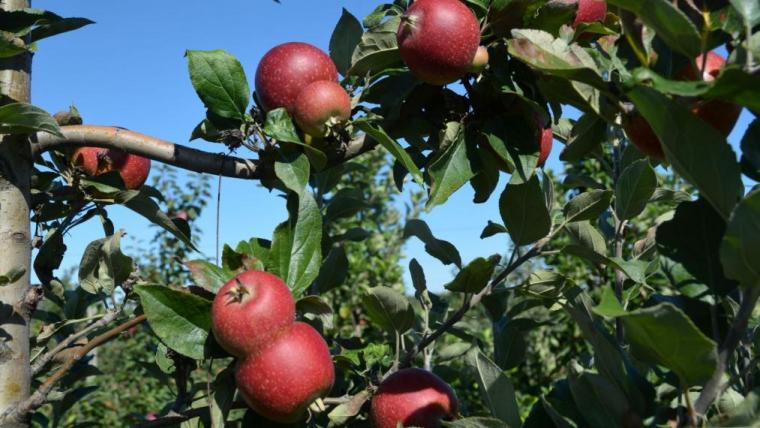
An interdisciplinary research team at the University of Guelph aims to expand and diversify the local craft cider industry.
The team, led by Dr. George van der Merwe [1], a professor in the Department of Molecular and Cellular Biology, plans to help increase local cider production and expand markets in Ontario.
“Ontario plays an important role in Canada’s cider industry, but only one-quarter of the cider Ontarians consume is Ontario craft cider. The remainder is imported,” says van der Merwe. “Our research aims to address barriers in local cider production to grow the Ontario market.”
Launched in 2018, the project aims to improve growth of the craft cider industry by cultivating new yeast strains, developing new cider apple varieties and better understanding the impact of taxation on the industry.
Wine yeast is commonly used to ferment juice into hard cider, but it has a generic flavour profile. To diversify flavours, van der Merwe is experimenting with different Ontario-isolated yeast types within the genus Saccharomyces.
Van der Merwe is working alongside other researchers at U of G with diverse expertise in the craft cider industry, including Dr. John Cline [2], a professor in the Department of Plant Agriculture, as well as Elliott Currie [3]and Sonia Dhaliwal [4], both professors in the Gordon S. Lang School of Business and Economics.
“Collaboration is an important part of the research and development process,” says van der Merwe. “Optimizing the craft cider industry requires cooperation between researchers, cider producers and the government.”
Cline is developing new cider apple cultivars grown on miniaturizing rootstocks, which allow for high-density planting.
Compared to culinary apples, cider apples are abundant in phenolics – plant-derived compounds contributing flavour properties – and acidity, which give ciders a unique taste profile. However, cideries mainly use culinary apples since the apples can be used for both consumption and cider production.
To date, the research team has developed several cider apple varieties and yeast for use in cider production, but more research is needed to test these varieties together.
As van der Merwe and Cline continue enhancing cider flavour, Currie and Dhaliwal are looking at taxation in the cider industry.
Currie and Dhaliwal found that cider and wine are taxed at a significantly higher rate than beer. These high taxation rates limit the profitability of the craft cider market and are a challenge for small cideries, especially for those looking to grow in the industry.
The researchers suggest that the classification system and tax regime for different types of alcohol need to be restructured to expand the market and profit margins.
“There’s a lot of potential in the Ontario craft cider industry,” says van der Merwe. “This research will make way for further discussion on ways to increase profitability for Ontario cider producers.”
This research is funded by the Ontario Ministry of Agriculture, Food and Rural Affairs through the Ontario Agri-Food Innovation Alliance.
